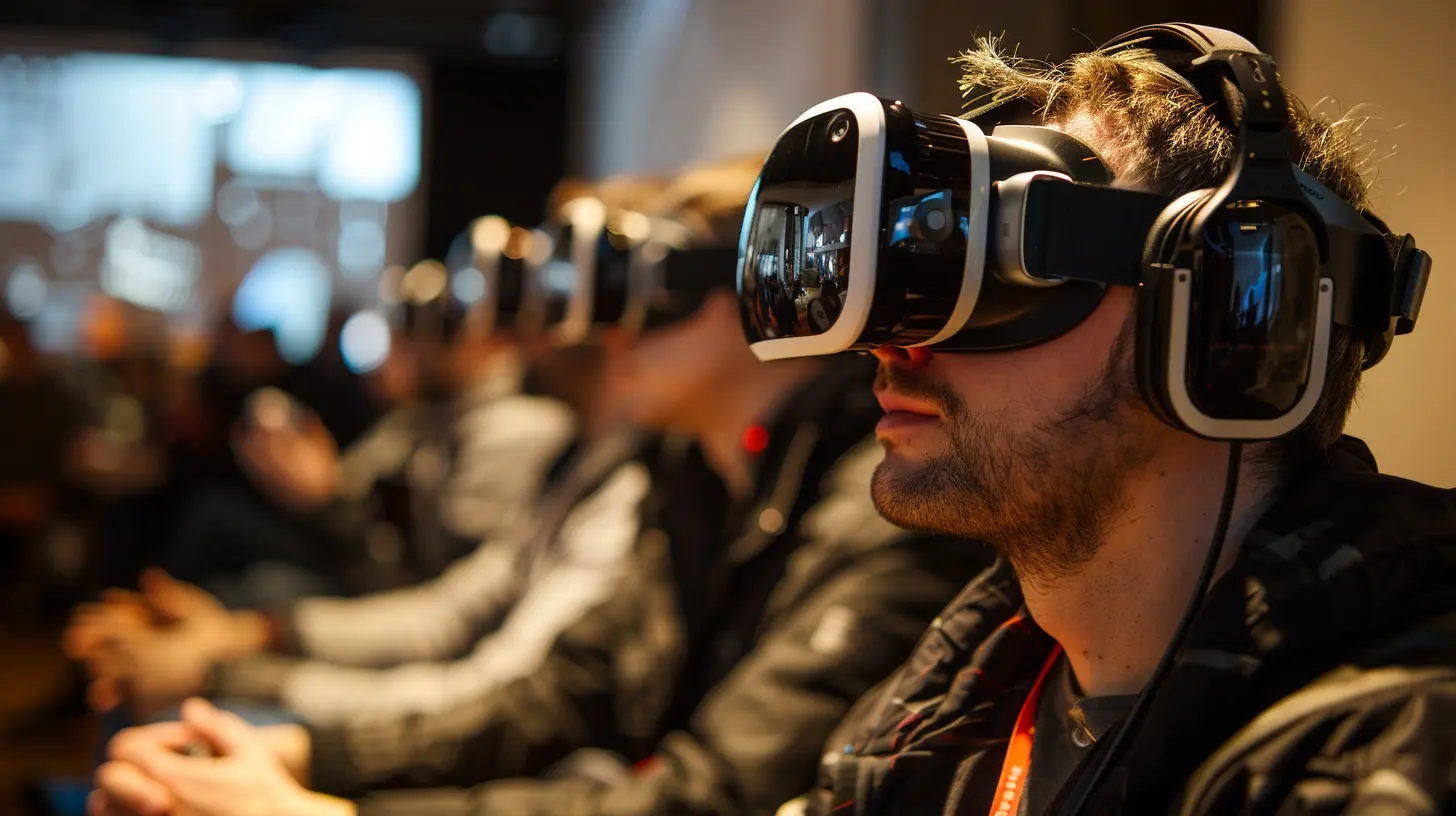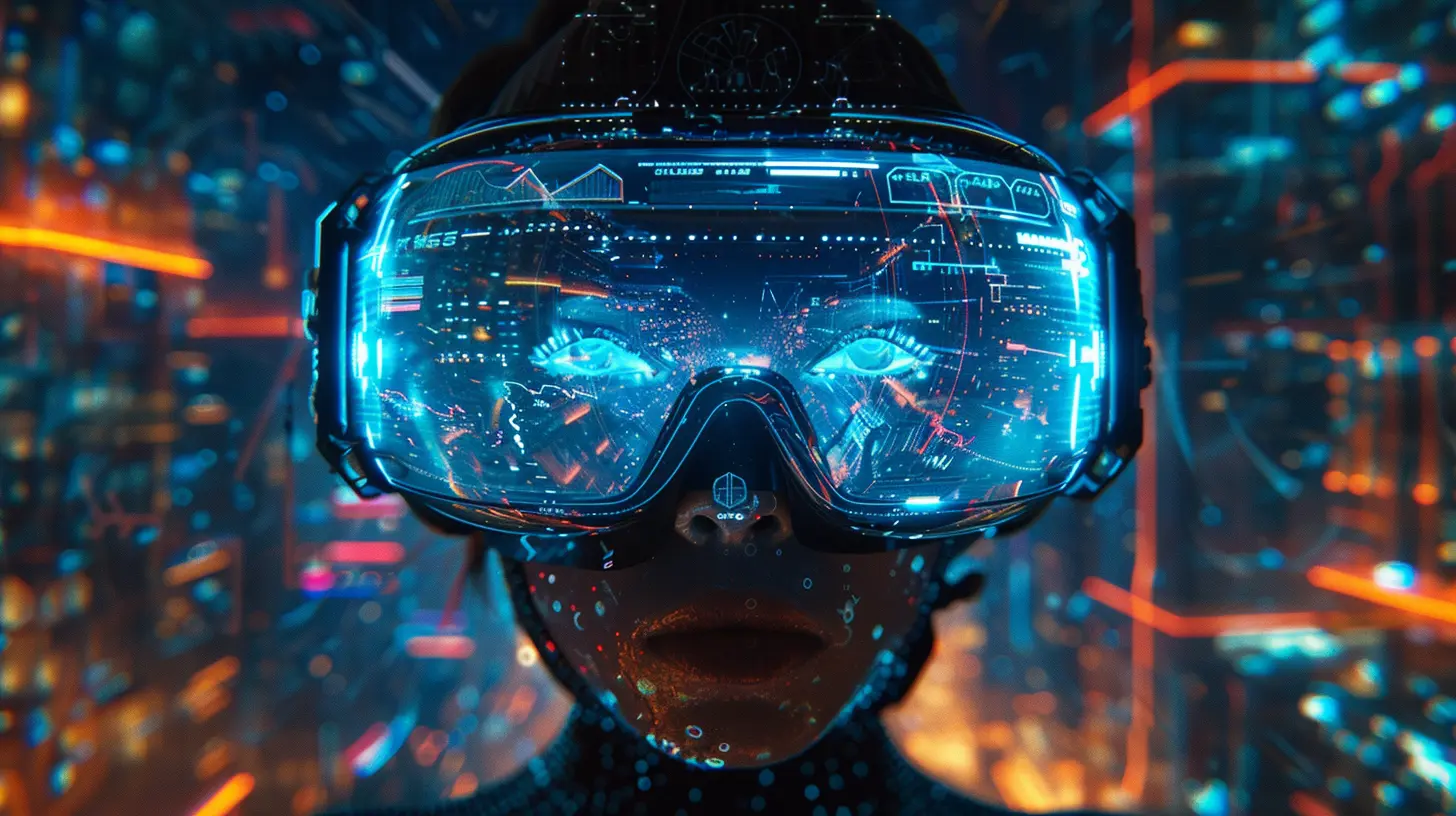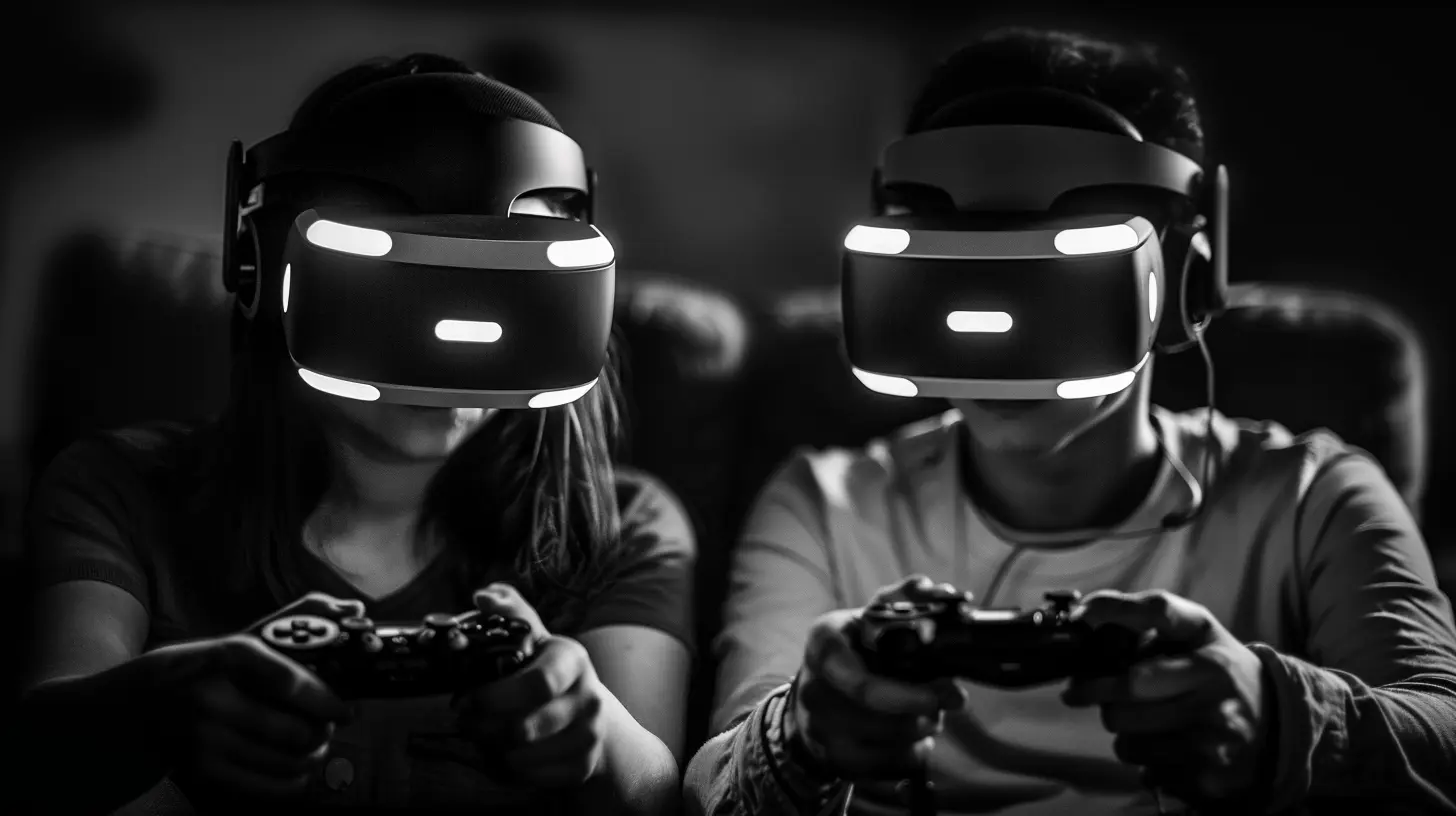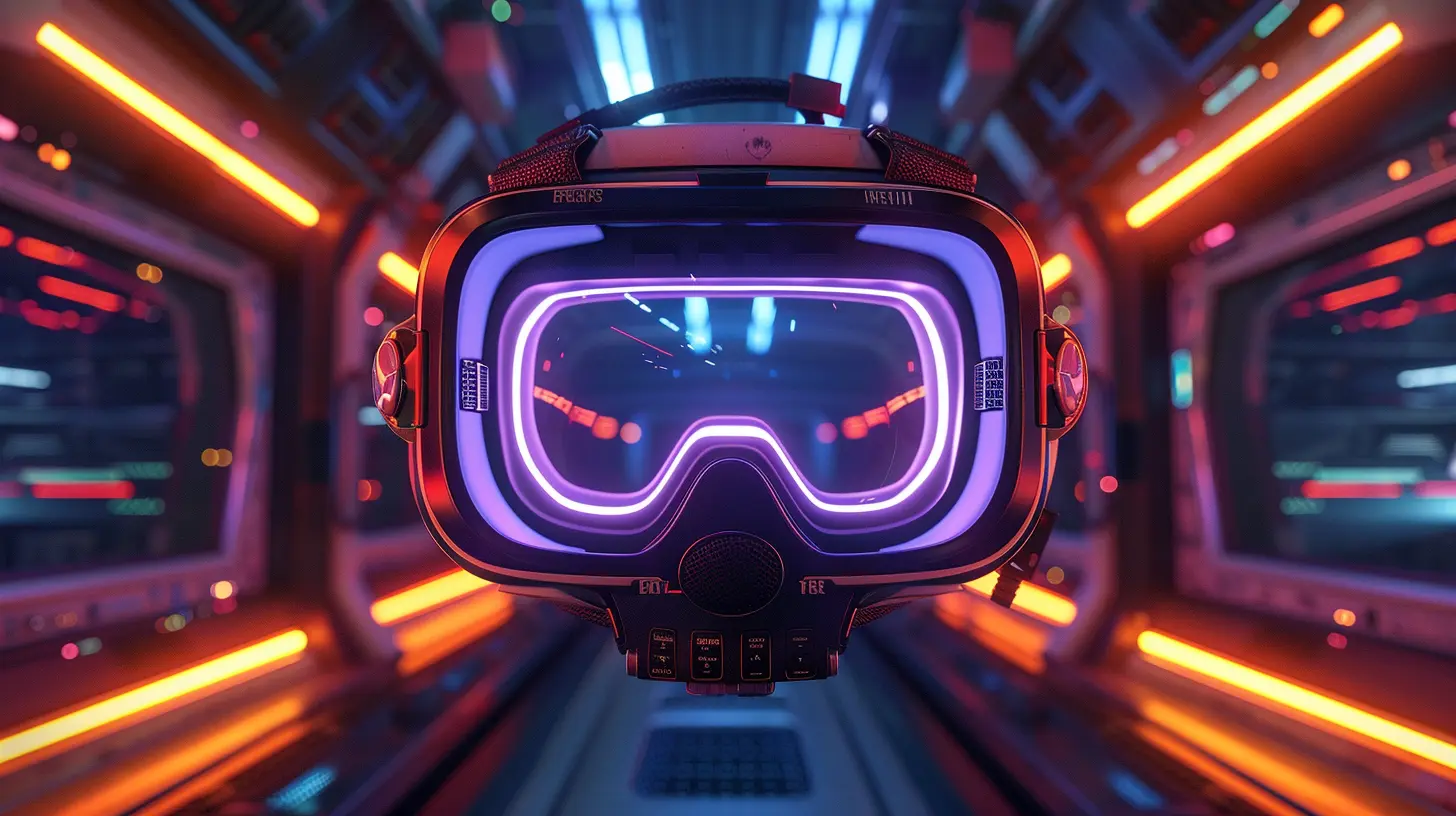How VR is Changing the Face of Multiplayer Gaming
30 August 2025
Let’s just take a second and think about one of the biggest dreams gamers have ever had—being inside the game. Not just controlling a character but actually seeing, hearing, and feeling like you're there. Sounds like some futuristic movie plot, right? Well, thanks to Virtual Reality (VR), that dream is now a reality... or, well, virtual reality.
VR is no longer just about walking through pre-programmed landscapes on your own. Nope. It's become something a lot more social, immersive, and, straight-up next level. Multiplayer gaming has been redefined by VR, flipping the script on what it means to play together. So, buckle in (or should I say strap on your headset?), because we're diving into how VR is changing the face of multiplayer gaming—and it’s a game-changer in every sense.
The Evolution from Couch Co-op to Full-Body Immersion
Let’s throw it way back. Remember old-school multiplayer? Split-screen Mario Kart battles, LAN parties, or shouting at your buddy on the other end of a Halo lobby? That was the golden age—for its time. But then online multiplayer entered the scene, and suddenly we were fragging strangers from around the globe.Now? With VR, we’ve moved from pixels on screens to virtual worlds that feel so real, you can almost touch them. Instead of button-mashing on a gamepad, you're swinging virtual swords, shaking hands, or even giving your friend (or enemy) a real-time high five. It’s not just playing a game anymore. It’s being in the game—with others.
Real Presence, Real Connections
One of the biggest ways VR is shaking things up? Presence.What’s presence, you ask? It's that feeling that you’re really there. In VR, it’s not just about what you see; it’s how your brain gets tricked into thinking the virtual world is the real one. Add players into that space, and things get even more interesting.
You can now look someone in the eye, read their body language, and hear their voice spatially as they move around you. Traditional gaming has chat and voice comms, sure, but nothing compares to turning your head and seeing your friend standing right there—virtually, of course.
Example? Games like VRChat or Rec Room aren’t just about competition. They're about hanging out, socializing, and creating memories. It's like a virtual hangout spot where people from every corner of the earth can gather around a table, shoot hoops, or explore wild, user-made worlds together.
Hand Gestures, Body Movement, and Full-Body Avatars
Controlling a character used to mean pushing buttons. Now? Your hand is the controller. In multiplayer VR, your body becomes the interface. That’s pretty wild, right?Imagine throwing a fireball in a fantasy game using a real-life hand motion. Or ducking behind a wall for cover in a shooter—physically crouching in your living room. This level of physicality transforms multiplayer gaming into something that feels athletic, energizing, and intensely personal.
And full-body avatars take it up a notch. Motion tracking systems allow your in-game character to mimic your real movements. So when you dance, they dance. When you wave, others see it. It's like your digital twin is out there making moves. Cool? Yup. A little weird? Maybe. Totally awesome? Absolutely.
Beyond Just Gaming: Socializing and Shared Experiences
Here’s where it gets even more mind-blowing. VR multiplayer isn't just about competition or co-op missions anymore. It's about shared experiences—concerts, movie nights, virtual field trips, and even office meetings (yes, really).Meta’s Horizon Worlds and VR platforms like AltspaceVR have created online social spaces that blur the line between gaming and real-life interaction. You can attend a comedy show, meet new people, or co-create digital art—all while “standing” shoulder-to-shoulder with folks thousands of miles away.
It’s like Zoom on steroids. You’re not just talking to floating heads in squares. You're in the room with them. You can see their reactions, move around, and interact in real-time.
Multiplayer VR Is Breaking Language Barriers
Here's something you might not have thought about: VR’s immersive communication is helping people connect across languages. That’s right!Body language, gestures, and tone all become part of communication in a much more natural way than text or even standard voice chat allows. Even if you don’t speak the same language fluently, you can still point, shrug, nod, or give a thumbs up. It’s like a universal translator made out of vibes.
Competitive Esports in VR Are Heating Up
Esports generation, this one's for you.We’re seeing a new wave of competitive VR games making names for themselves in the esports scene. Games like Echo VR, Onward, and Population: ONE bring fast-paced action to the immersive level. Players duck, dive, aim, and physically move in the arena. It’s like watching traditional esports, but with a hint of sci-fi flair.
And from an audience perspective? Watching a VR esports match is half entertainment, half athletic showcase. With features like third-person camera views and in-game flythroughs, viewers get a cinematic experience too.
The Tech Behind the Magic
Let’s nerd out for a sec, shall we?The synergy of multiplayer VR gaming is powered by some pretty slick tech:
- Head-tracking and motion sensors: Essential for translating your head and body movements into the VR space.
- Haptic feedback: Those controllers? They vibrate and respond to your actions, making it feel like you're holding something real.
- Eye-tracking and facial recognition (in some high-end systems): These add emotional expression to avatars so you can see when someone is surprised, happy, or annoyed.
- Cloud servers and low latency networks: Because no one wants to lag in the middle of a virtual firefight.
All of these pieces come together to create seamless multiplayer experiences that feel incredibly close to real life.
Challenges on the Horizon
Of course, it’s not all unicorns and rainbows just yet.VR multiplayer gaming faces a few hurdles:
- Hardware Costs: Not everyone can afford a high-end VR setup.
- Motion Sickness: Some people still feel queasy in virtual environments.
- Accessibility: VR isn't always inclusive for people with disabilities.
- Online Harassment: Like other online spaces, keeping VR safe and respectful is an ongoing concern.
The good news? Developers are seriously working on this stuff. From cheaper headsets to comfort settings that reduce nausea, the VR world is evolving fast.
What's Next for Multiplayer VR?
So where do we go from here?We’re just scratching the surface. Expect to see:
- Cross-platform play between traditional screen gamers and VR players.
- AI-driven avatars that act as friends or guides inside virtual worlds.
- Mixed reality experiences where your real-world environment blends with the digital one.
- More social-focused multiplayer VR games that go beyond shooting and looting, emphasizing creativity, storytelling, and collaboration.
The future is looking ridiculously promising—and a little sci-fi.
Final Thoughts: It's Just Getting Started
VR is not just a new way to play games—it’s a new way to experience connection. Multiplayer gaming has always been about that connection. From sharing a screen with your sibling to forming global teams with online friends, games have always bridged gaps.Now, thanks to VR, that bridge is wider, deeper, and way more immersive.
We’re stepping into an era where multiplayer games don’t just exist on a screen but surround us in 360 degrees. They make us move, laugh, shout, and occasionally flail around awkwardly in our living rooms. And let’s be honest, that’s half the fun.
So, the next time you put on a VR headset and boot up a multiplayer game, take a second to appreciate what’s happening. You’re not just playing. You’re being. And that’s a whole new level of awesome.
all images in this post were generated using AI tools
Category:
Virtual RealityAuthor:

Michael Robinson
Discussion
rate this article
1 comments
Norah McKibben
Virtual Reality is revolutionizing multiplayer gaming by creating immersive environments that enhance social interactions and gameplay experiences. As technology advances, VR fosters deeper connections among players, transforming traditional gaming dynamics into engaging, shared adventures.
September 3, 2025 at 2:27 AM

Michael Robinson
Absolutely! VR is indeed redefining multiplayer gaming by immersing players in rich environments that enhance social connections and collaborative experiences. It's exciting to see how these advancements are reshaping gameplay dynamics!


